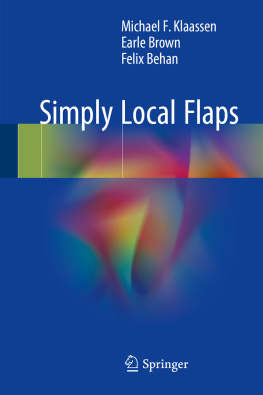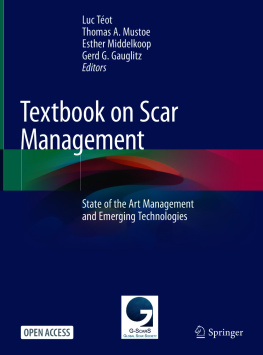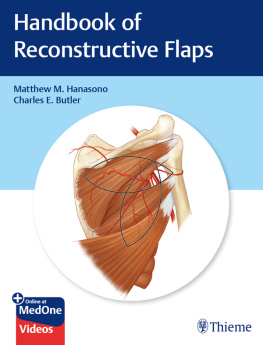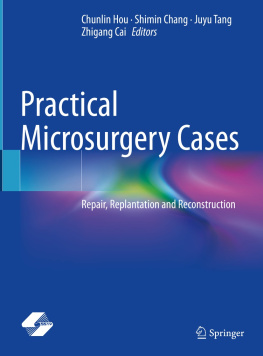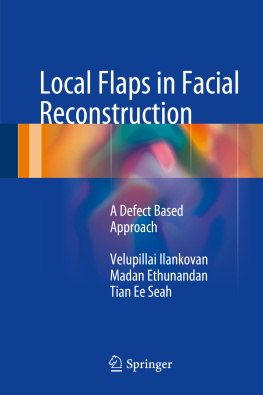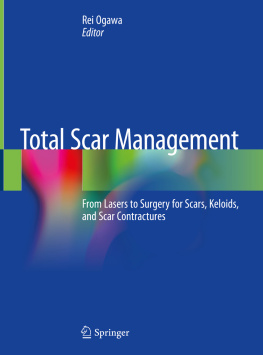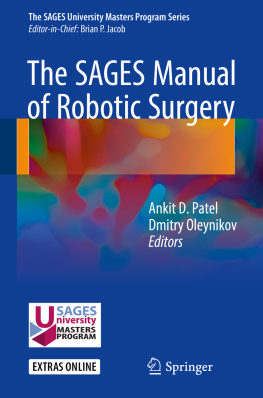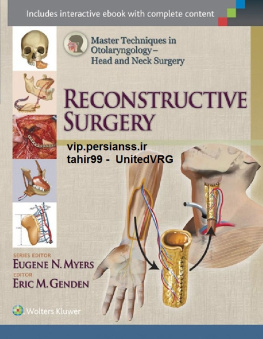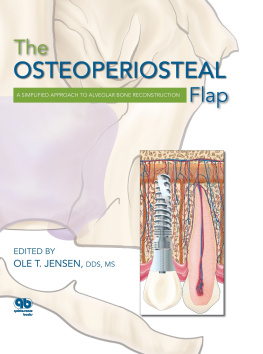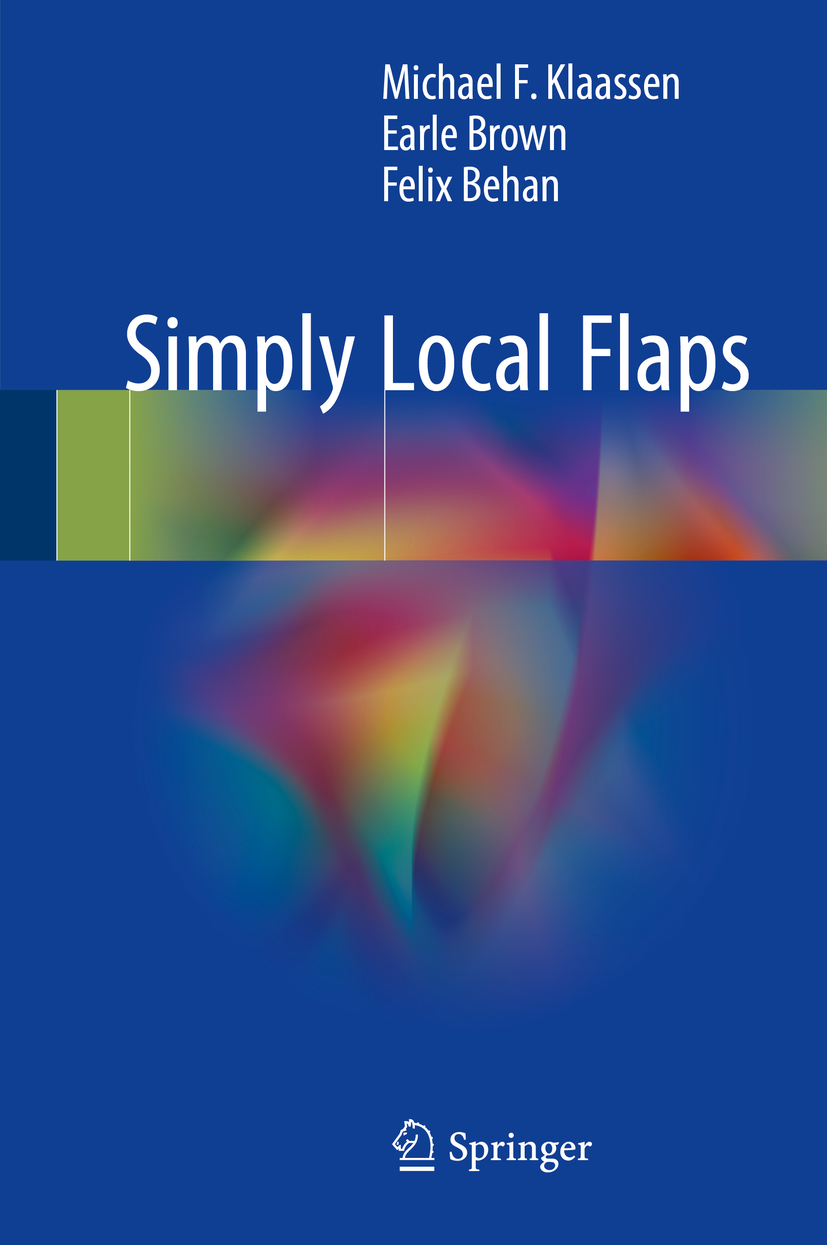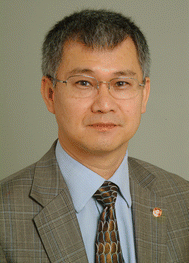Dr. Michael Klaassen, FRACS, encouraged, egged on and supported by close colleagues and co-authors Drs. Earle Brown and Felix Behan, has produced
Simply Local Flaps. It is a privilege and a pleasure for me to be one of the first to view their work and to pen a foreword for this wonderful publication. The book consists of an extensive catalogue of pre-, intra- and post-operative photos of patients who have benefitted from local flap surgery that has preserved and/or restored their quality of life. This masterpiece, preceded by their previous publications,
Introduction to Local Flaps: A Surgeons Handbook and
Defining Local Flaps: Clinical Applications and Methods , underscores how one thinks like a plastic surgeon when faced with varied and often challenging clinical scenarios. It will be a timeless treasure in the collection of both students and experienced practitioners of plastic surgery.
Dr. Swee T. Tan
The 200 pages cover 125 clinical cases, mostly pertaining to the reconstruction of cutaneous defects following excision of skin cancers. This atlas is a practical guide that covers almost all possible situations faced by a busy practising plastic surgeon, drawn from a wealth of personal experience over many years of caring for patients. Yet it is not designed as a recipe-like cookbook. Underlying these apparent simple cases and the challenging situations are the real gems, words of wisdom, nuances and the espousal of the fundamental surgical principles that underscore the elegant execution of operations characterised by a creative and innovative flair.
In addition, readers are treated to beautiful drawings and many diagrams, including those in the first part that help convey flap design and planning underpinned by fundamental guiding principles and sound decision-making. Many of these principles have been passed on from the greats and the wise, such as Gillies and McIndoe, through successive generations of plastic surgeons.
Execution of the operative plans has been illustrated in a coherent, stepwise and concise manner. The book highlights the hallmarks of a mature surgeon embarking on this area of surgical endeavour, characterised by a deep understanding of the difference between surgical principles and surgical technique. This book contains a roadmap and a toolbox, intricately and seamlessly linked but distinctive.
The early chapters of this book provide a useful framework for categorising local flaps by their composition, blood supply, geometry and means of transfer. As closure of the donor site and the resultant scars are critical aspects of a good design, the concepts behind identification of relaxed skin tension lines are emphasised, the clear objective being to achieve the best long-term results for the patient.
The book is divided into four parts interposed by beautiful artwork.
The three chapters in Part I are dedicated to the fundamentalsthe basics, how to get started and technical tips. It also includes advice relating to wound care and scar management. These practical pointers are very useful to the novice and a reminder to the experienced practitioners, emphasising the importance of creating an environment of safe practice and good habits.
Part II consists of eight chapters describing the types of flaps that are traditionally taught and the ten most common flaps. These are tried and tested and time honoured, not just in relation to the size but also in dealing with challenging and complex defects. It contains various modifications of the original design and combinations of concepts that can be applied to unique situations. Chap. presents the most recommended ten traditional local flaps regarded by the authors, applied mostly to defects on the head and neck area.
The first two chapters of Part III are devoted to the keystone perforator island flap, first described and popularised by Dr. Felix Behan with application of this flap to various body sites, offering elegant solutions to some tricky situations. The second chapter of this part illustrates the application of keystone flaps to ten different parts of the body with clinical cases, as favoured by the lead author. The last chapter is dedicated to various combinations of flaps applied to many different and often very challenging situations.
The four chapters in Part IV are focused on judgement, decision-making and experience: essentially how to decide if a skin graft is better, matters relating to aesthetics, dealing with complications and how to think like a plastic surgeon. Chap. , which deals with surgical complications and their management, would arguably have been the most challenging chapter to write. Yet much can be learnt about pitfalls and how best to minimise the risk of complications and about management of them with courage and humility, particularly in supporting the patients through what can be a very difficult time.

